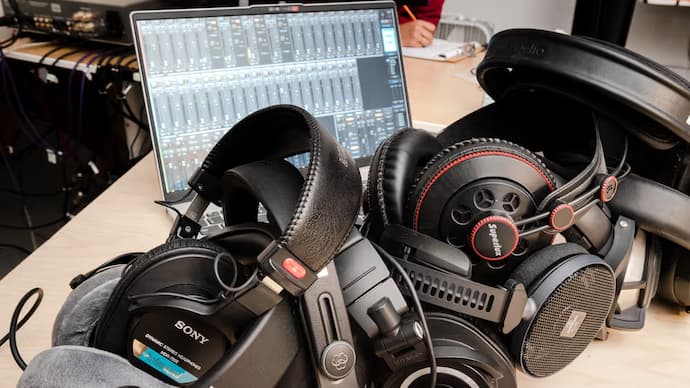More and more songwriters and promising producers are choosing to establish their own home music studios that allow them to record music at home now that music production software and technology have become more accessible through various music stores to the public. Instead of spending more on studio time, you could utilise the funds to equip your own home studio and start recording right now.
What Does a Home Music Studio Need?
To set up a basic home music studio, you will need a computer with audio production software, an audio interface, a MIDI controller, headphones or speakers, acoustic room treatment, and, if you play an instrument, microphones, cables, and stands. Most of these items are sold by different brands and at different prices at your favourite online music shops.
1. PC or Laptop

First, you’ll need a computer that can run digital audio software and has enough space to store your audio files. It doesn’t really matter if you’re more of a Mac or PC person, but I’d suggest getting a computer with at least 1 TB of storage and 8 GB of RAM. This will let you run most music software without major delays and give you enough storage space to keep all of your audio samples, recordings, and final masters.
2. Music-Producing Software
A digital audio workstation (DAW) is a piece of software that lets you record, edit, and mix music on your computer. A lot of people argue about which DAW is the best, but from what I’ve seen, they all have the same features and functions. It’s important to remember that some DAWs only work on one platform. For example, Logic Pro can only be used on Mac computers. Also, DAWs come in a wide range of prices, from free to not-so-cheap. So, you should do your own research to figure out which of these options is best for you.
3. Audio Interface

An audio interface is the thing that connects your microphones, instruments, and speakers to your computer. It changes analogue audio signals into digital signals that your computer can understand. If you want to use a microphone, a guitar, or a keyboard to record to your computer software, you will need an audio interface. If you want to connect your laptop to your studio monitor speakers, you’ll also need an audio interface.
4. MIDI Controller
It’s a good idea to have at least one MIDI controller in your home studio so that you can play your software instruments. MIDI controllers are just devices that connect to your computer and let you “play” the software. There are two main kinds of MIDI controllers: those with a traditional keyboard layout and those with pads you can hit to trigger samples.
5. Studio Headphones and Monitors

You’ll need something to listen to and examine the recordings you make in your home studio. Even though it would be best to have both an appropriate pair of mixing headphones and a fine set of studio monitors, you only really need one or the other for your home studio setup.
Studio monitors are made to have a flat, neutral frequency response that precisely reproduces sound as it was captured or mixed. This is different from consumer speakers, which often boost certain frequencies to make music sound better. This lets you hear the full range of frequencies very accurately, so you can make smart choices about how to change the levels, EQ, and other settings.
6. Mics, Cables, and Microphone Stands
You’ll also need at least one or two microphones for your home music studio so you can record different instruments and singers. Some of the most common types of microphones are dynamic, condenser, and ribbon microphones. However, different types of microphones work best for recording different instruments.
Condenser mics are ideal for recording a wide range of instruments, including vocals, and if they’re set up right, they can often get a very clear recording. Read this article about microphone placement if you want to learn more about where to put your mic. You will also need different cables and stands to set up your microphones and connect them to your audio interface.
7. Soundproofing Treatment
By cutting down on echoes and reverberations, acoustic or soundproofing room treatment helps you control the sound in your recording space. To get the best sound quality, you can use soundproofing panels, diffusers, and noise traps. I wouldn’t spend a lot of money on acoustic treatment since you can easily use pillows, towels, or any other soft materials to help deaden the sound in your recording space.
The most important thing to do when setting up your acoustic treatment is to test it as you go and make sure to protect and organize your music equipment. So, set up some panels, hang some blankets from the ceiling, and put a towel under the door. Then record a few times and listen back. If the audio sounds too “dead,” take away some, according to your liking. And remember to have fun while checking out different music shops and enjoy yourself during your creative process!





















